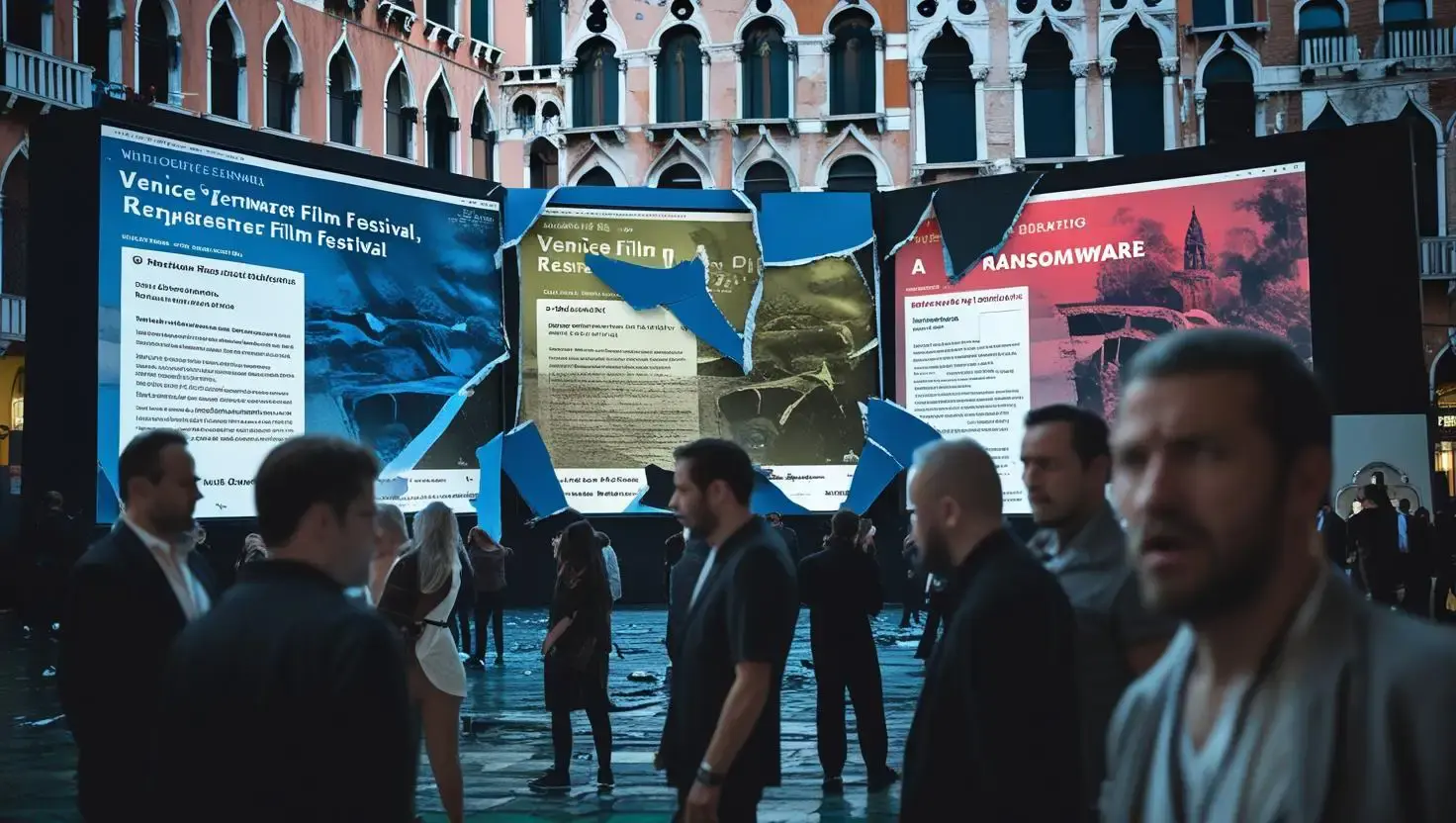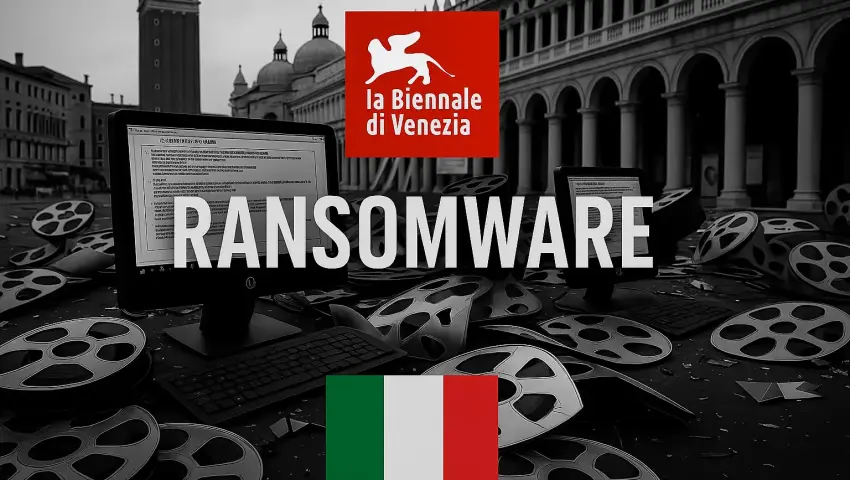
The Silencing of Venice: When Code Drowns Culture
Curtain Rises—Architects of Imagination, Targets of Infiltration
In the labyrinthine canals of Venice, where art breathes through stone and tradition flows with the tide, the Venice Biennale reigns not only as a cultural beacon—but as a fortress of the world's most ambitious ideas. Founded in 1895, this venerable institution has expanded over centuries into an engine of creative pluralism: with departments spanning Art, Architecture, Cinema, Dance, Music, and Theatre, it curates both memory and modernity.
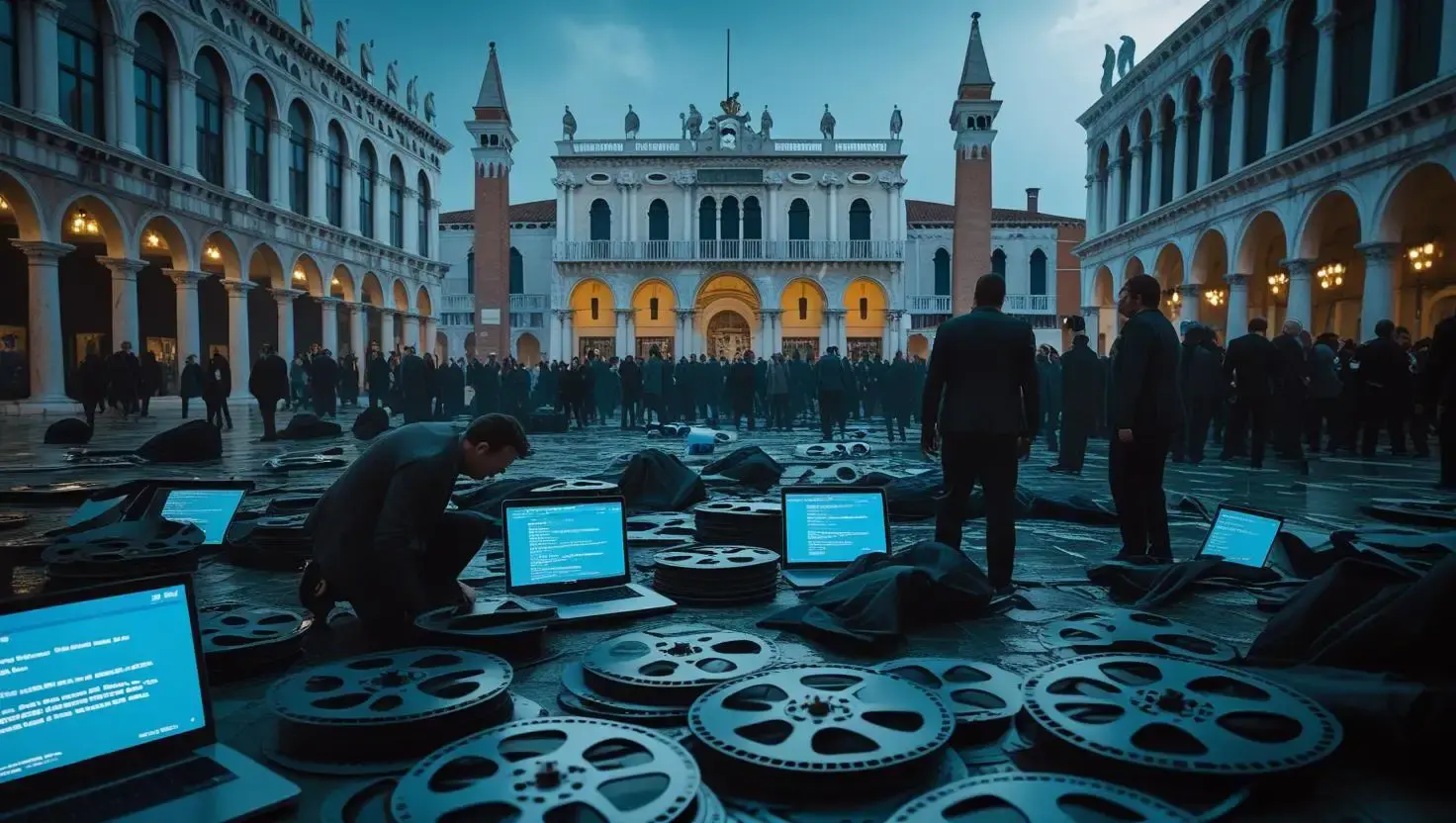
2025 saw the Biennale guided by President Piergiorgio Battufooco, with an annual revenue of $18.1 million, generously supported by state backing, private sponsors, and intellectual partnerships. Its most conceptually provocative department—the Architecture Biennale—opened this year under the theme “Intelligens. Natural. Artificial. Collective.”, a lofty attempt to bridge the organic soul of humanity with the synthetic mind of machines.
But as visitors flooded pavilions and curators finalized installations, the silence hit.
On July 7th, internal servers faltered. Emails failed. Payment systems choked. A festival that thrives on connection—both artistic and logistical—was digitally severed.
Enter incransom.
An elusive and quiet entity, incransom is not your typical ransomware band. No ideology. No Twitter soapboxes. No dark web manifestos. Just precision and encrypted devastation. Over 800 gigabytes of sensitive information—including financial statements, personal data, donor records, and contractual materials—were locked behind hostile encryption.
What makes incransom so unnerving is its choice of target. Not a multinational bank. Not a tech conglomerate. But a symbol. A festival of collaboration and cultural exchange. Cy-Napea® believes this wasn't just theft—it was a performance. A commentary delivered in malware, targeting the collective intelligence the Biennale dared to celebrate.
In the poetic irony of our digital age, Venice—where ideas once ruled marble and canvas—now grapples with the silence of stolen signals.
Anatomy of the Breach—Signals That Drowned the City

Beneath the marble halls and digital dreams of the Venice Biennale, the silence was not poetic—it was engineered. On July 7th, a breach pierced the cultural sanctum not with graffiti or protest, but with scripts and payloads.
The attack on the Biennale was no impulsive strike. It was layered, surgical, and disturbingly deliberate.
According to forensic data confirmed by Cy-Napea® via ransomware.live, the intruders—operating under the name incransom—executed a targeted infostealer campaign that infiltrated:
19 internal employees
82 system users
5 third-party contractors
35 nodes on the external attack surface
A total of 141 compromised identities, each one a thread in the fabric of Venice’s cultural machine. But identities were only the beginning.
The tools of the breach tell a darker tale: a cocktail of infostealers designed for stealth and precision, delivered like poisoned invitations into the Biennale’s inbox.
Malware Used in the Attack:
Infostealer Variant | Distribution Share |
|---|---|
| RedLine | 44.9% |
| Lumma | 20.3% |
| StealC | 15.9% |
| Raccoon | 11.6% |
| Vidar | 5.8% |
| Azorult | 1.4% |
RedLine, the most prominent, is notorious for targeting browser-stored credentials, FTP accounts, and session tokens. Lumma, a rising threat in the malware economy, specializes in evading antivirus protections while vacuuming authentication data. StealC and Raccoon often arrive embedded in malicious PDFs and event invitations—perfect camouflage in an environment built on outreach and collaboration.
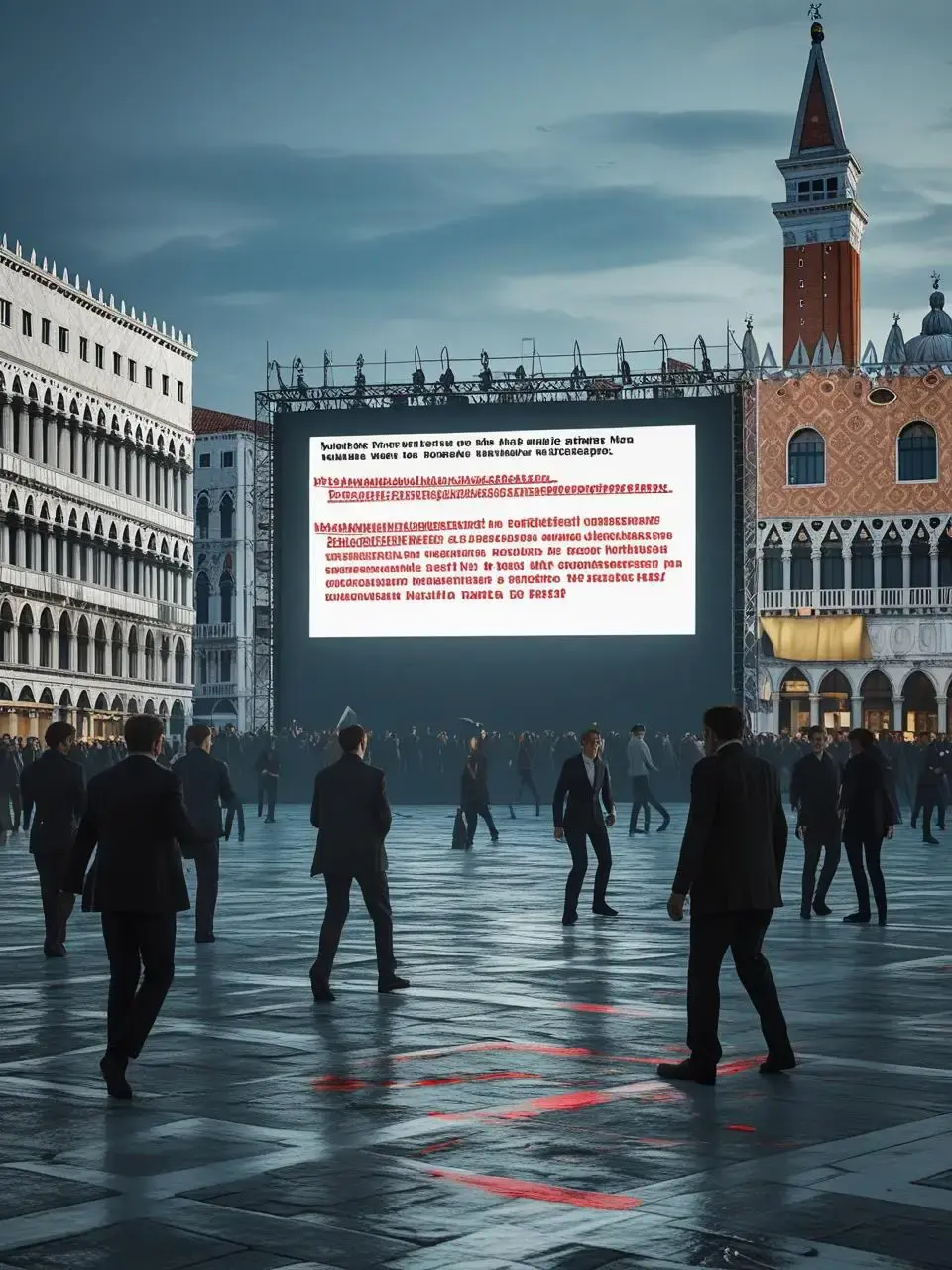
Even Vidar and Azorult, considered minor players in past cyber intrusions, proved their relevance when deployed en masse during the Biennale’s peak preparation. Together, these infostealers constructed a lattice of infiltration that defied traditional perimeter security.
Cy-Napea® concludes that the breach’s success hinged on two factors:
Trust as a vulnerability—the Biennale’s open architecture invited participation across borders and devices, making it a ripe target for socially engineered entry points.
Silence as a strategy—incransom didn’t deface; it disappeared. No public declarations, no leaks. Just encryption and extortion, carefully shielded from the media until the damage was irreversible.
If the Biennale’s theme was to celebrate artificial and natural intelligence in unity, then this breach exposed their divergence—a place where synthetic malice danced through digital corridors, unnoticed until the curtain had already fallen.
The Cost of Silence—Damages, Fines, and the Price of Cultural Exposure
The Venice Biennale has long been a sanctuary for ideas, but in the wake of the incransom breach, it became a case study in digital fragility. The attack didn’t just lock files—it unlocked a cascade of consequences that now threaten the institution’s financial stability, regulatory standing, and public trust.
Financial Damages
While the Biennale’s annual revenue stood at $18.1 million, the breach has introduced losses that could rival or exceed that figure. Based on industry benchmarks for ransomware incidents in cultural and educational sectors, Cy-Napea® estimates:
Direct costs:
System restoration, forensic audits, and infrastructure upgrades: $2–3 million
Legal counsel and crisis communications: $500,000+
Temporary operational shutdowns and event disruptions: $1.2 million
Indirect costs:
Sponsor withdrawals and donor hesitancy: $3–5 million projected over 12 months
Reputational damage and reduced attendance: $1.5 million in lost ticketing and merchandise revenue
Insurance premium hikes and coverage renegotiations: $400,000+
Total projected financial impact: $8–11 million, excluding ransom demands and long-term reputational erosion.
Regulatory Penalties: NIS2 and GDPR
The Biennale, as a publicly funded and internationally integrated institution, falls under the scope of both NIS2 and GDPR. The breach triggered compliance failures on multiple fronts:
Under NIS2 (Network and Information Security Directive 2):
Failure to implement adequate cybersecurity risk management
Delayed incident reporting
Exposure of third-party vulnerabilities

As an essential entity, the Biennale faces potential fines of up to €10 million or 2% of global annual revenue, whichever is higher. Non-financial penalties may include:
Mandatory security audits
Binding compliance orders
Public disclosure of violations
Temporary bans on management roles in case of repeated negligence
Under GDPR (General Data Protection Regulation):
Exposure of personal data from employees, collaborators, and donors
Failure to safeguard sensitive information
Insufficient breach notification protocols
GDPR violations can incur fines of up to €20 million or 4% of global turnover, depending on the severity and scope of the breach. Additional consequences include:
Civil liability claims from affected individuals
Data protection authority investigations
Long-term reputational damage in EU member states
The Cultural Cost
Beyond numbers and statutes, the Biennale now faces a more existential reckoning. Can an institution built on openness survive in a world that punishes transparency with exploitation? Can cultural diplomacy thrive when its digital infrastructure is weaponized?
Beyond the Breach—Prevention, Preparedness, and the Power of Knowing
The Venice Biennale’s digital collapse was not just a failure of infrastructure—it was a failure of anticipation. And while the damage is done, the lesson remains: cultural institutions must evolve from passive custodians of data to active defenders of it.
Cy-Napea® has long advocated a layered approach to cybersecurity—one that doesn’t rely on a single wall, but a fortress of interlocking systems and human awareness. Had this framework been in place, the Biennale’s breach could have been prevented or its impact dramatically reduced.
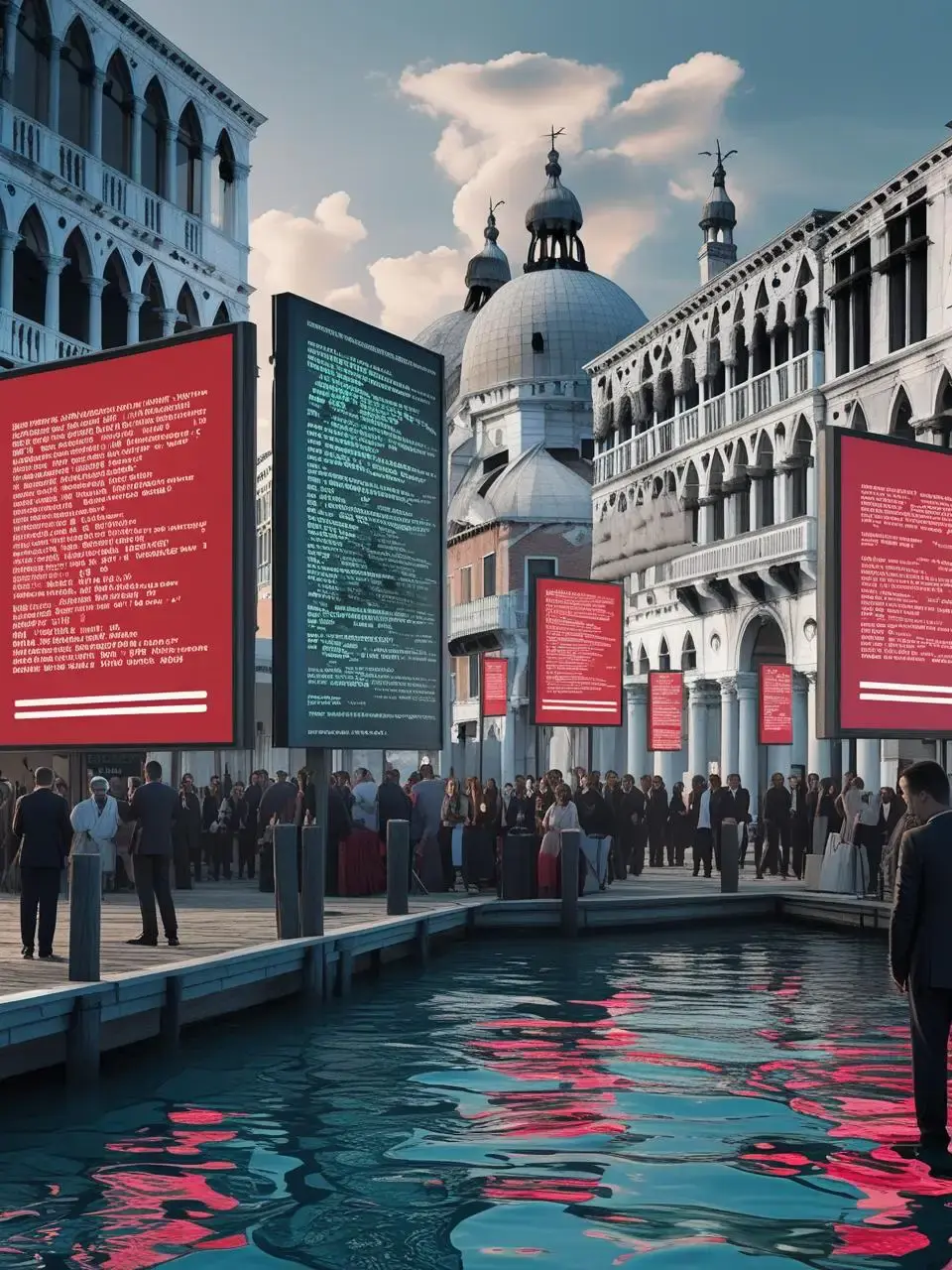
The Four Levels of Defense
1. Cybersecurity Awareness Training
Before malware ever executes, it exploits human error. Cy-Napea® trains staff to recognize phishing, social engineering, and suspicious behavior through:
Simulated attack scenarios
Role-specific threat recognition
Real-time behavioral feedback
This empowers curators, seasonal staff, and administrators to become the first line of defense.
2. Advanced Email Security
Most infostealers enter through inboxes. Our AI-powered email filters would have:
Blocked phishing attempts and spoofed sender domains
Flagged impersonation of Biennale officials and IT staff
Analyzed behavioral anomalies in email traffic
This would have neutralized the primary delivery vector used by incransom.
3. EDR/XDR/MDR Threat Detection
Once inside, attackers rely on stealth. Cy-Napea®’s endpoint and extended detection systems would have:
Identified unusual file encryption behavior
Isolated infected devices before lateral movement
Deployed automated countermeasures to halt exfiltration
This layer turns every device into a sensor and every anomaly into a signal.
4. Advanced Backup & One-Click Recovery
Even the best defenses can be breached. But with Cy-Napea®’s immutable backups and instant recovery:
Data integrity is preserved
Systems can be restored within hours
Ransom leverage is eliminated
This ensures continuity, even in crisis.
A Future-Proof Strategy
The Venice Biennale was built to celebrate intelligence—natural, artificial, and collective. But in the absence of digital foresight, it became a cautionary tale. Cy-Napea® offers more than protection; we offer resilience, reputation preservation, and regulatory alignment.
Legal Disclaimer
This article is presented by Cy-Napea® for informational and analytical purposes only. It does not constitute legal advice, cybersecurity guarantees, or official representation of any individual or organization mentioned herein. Cy-Napea® does not disclose internal methodologies except where explicitly authorized and does not engage in breach forensics without contract. All institutional names and breach data referenced are sourced from publicly available records and external intelligence platforms.
Sources
